Convolutional Feature Transfer via Camera-Specific Discriminative Pooling for Person Re-Identification
Tetsu Matsukawa,
Einoshin Suzuki

Auto-TLDR; A small-scale CNN feature transfer method for person re-identification
Similar papers
Building Computationally Efficient and Well-Generalizing Person Re-Identification Models with Metric Learning
Vladislav Sovrasov, Dmitry Sidnev

Auto-TLDR; Cross-Domain Generalization in Person Re-identification using Omni-Scale Network
Online Domain Adaptation for Person Re-Identification with a Human in the Loop
Rita Delussu, Lorenzo Putzu, Giorgio Fumera, Fabio Roli

Auto-TLDR; Human-in-the-loop for Person Re-Identification in Infeasible Applications
Abstract Slides Poster Similar
CANU-ReID: A Conditional Adversarial Network for Unsupervised Person Re-IDentification
Guillaume Delorme, Yihong Xu, Stéphane Lathuiliere, Radu Horaud, Xavier Alameda-Pineda

Auto-TLDR; Unsupervised Person Re-Identification with Clustering and Adversarial Learning
Domain Generalized Person Re-Identification Via Cross-Domain Episodic Learning
Ci-Siang Lin, Yuan Chia Cheng, Yu-Chiang Frank Wang

Auto-TLDR; Domain-Invariant Person Re-identification with Episodic Learning
Abstract Slides Poster Similar
Progressive Learning Algorithm for Efficient Person Re-Identification
Zhen Li, Hanyang Shao, Liang Niu, Nian Xue

Auto-TLDR; Progressive Learning Algorithm for Large-Scale Person Re-Identification
Abstract Slides Poster Similar
Attentive Part-Aware Networks for Partial Person Re-Identification
Lijuan Huo, Chunfeng Song, Zhengyi Liu, Zhaoxiang Zhang

Auto-TLDR; Part-Aware Learning for Partial Person Re-identification
Abstract Slides Poster Similar
Self-Paced Bottom-Up Clustering Network with Side Information for Person Re-Identification
Mingkun Li, Chun-Guang Li, Ruo-Pei Guo, Jun Guo
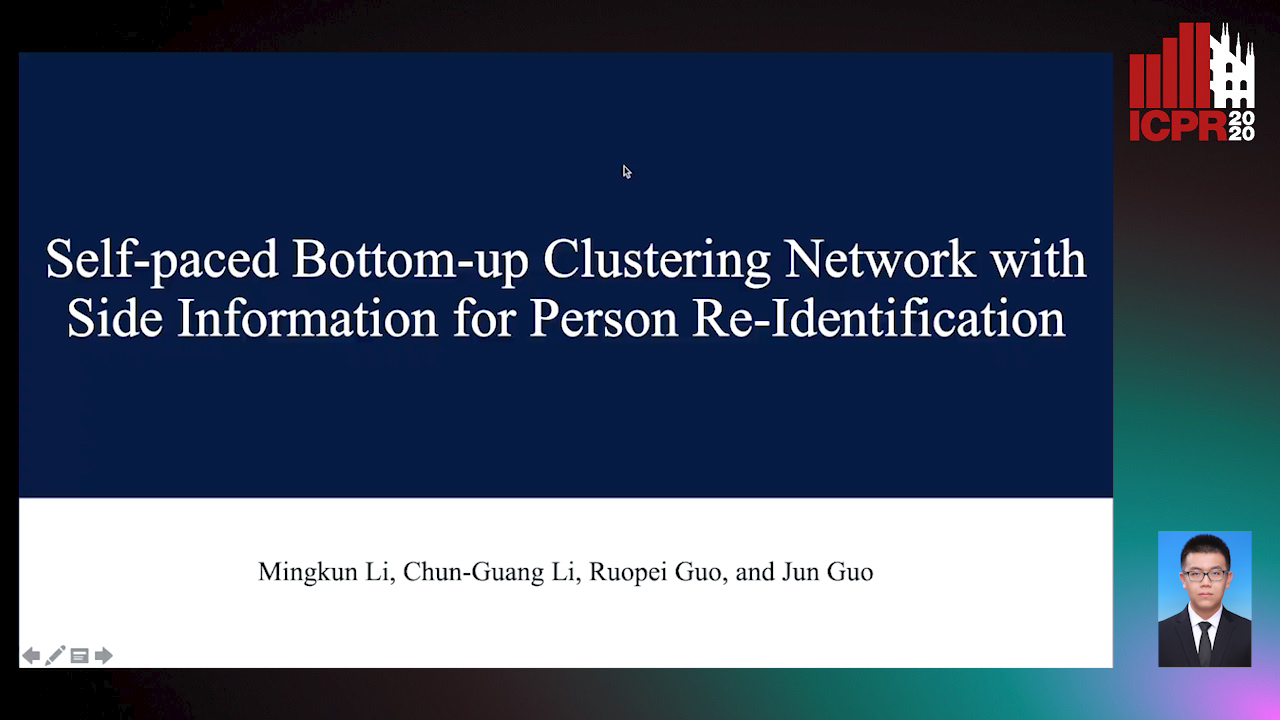
Auto-TLDR; Self-Paced Bottom-up Clustering Network with Side Information for Unsupervised Person Re-identification
Abstract Slides Poster Similar
Self and Channel Attention Network for Person Re-Identification
Asad Munir, Niki Martinel, Christian Micheloni
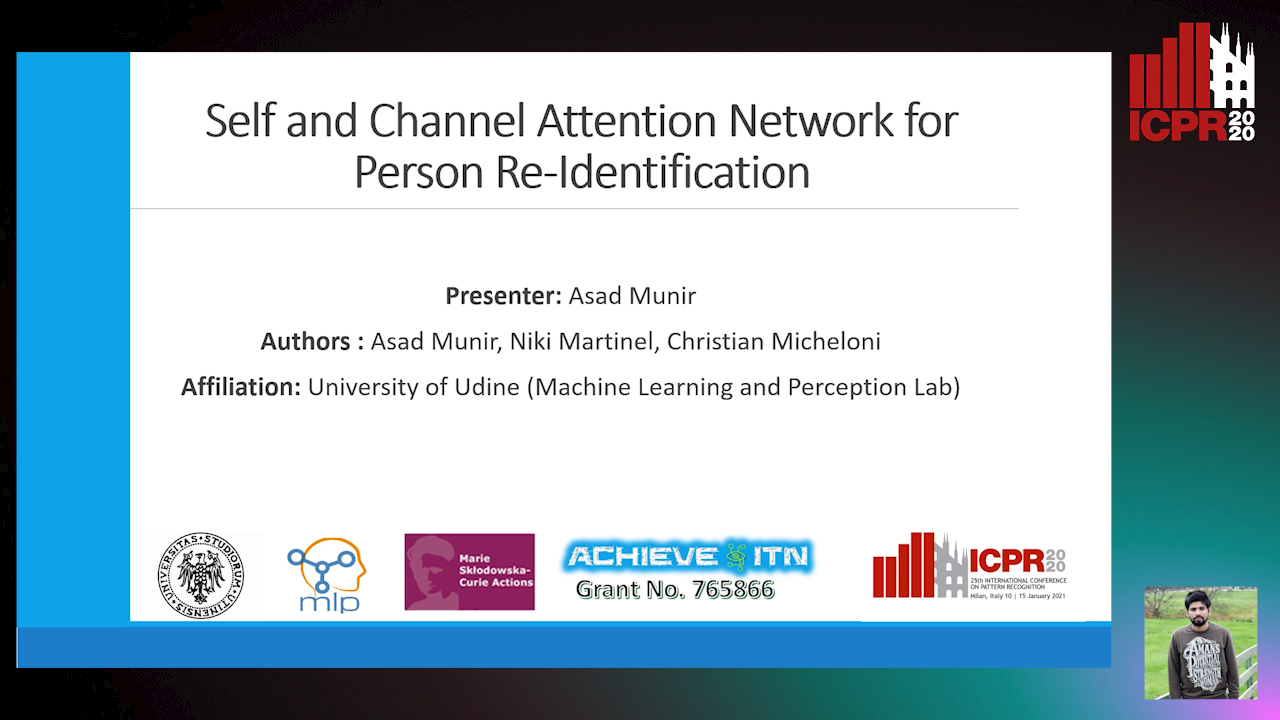
Auto-TLDR; SCAN: Self and Channel Attention Network for Person Re-identification
Abstract Slides Poster Similar
Attention-Based Model with Attribute Classification for Cross-Domain Person Re-Identification
Simin Xu, Lingkun Luo, Shiqiang Hu

Auto-TLDR; An attention-based model with attribute classification for cross-domain person re-identification
Open-World Group Retrieval with Ambiguity Removal: A Benchmark
Ling Mei, Jian-Huang Lai, Zhanxiang Feng, Xiaohua Xie
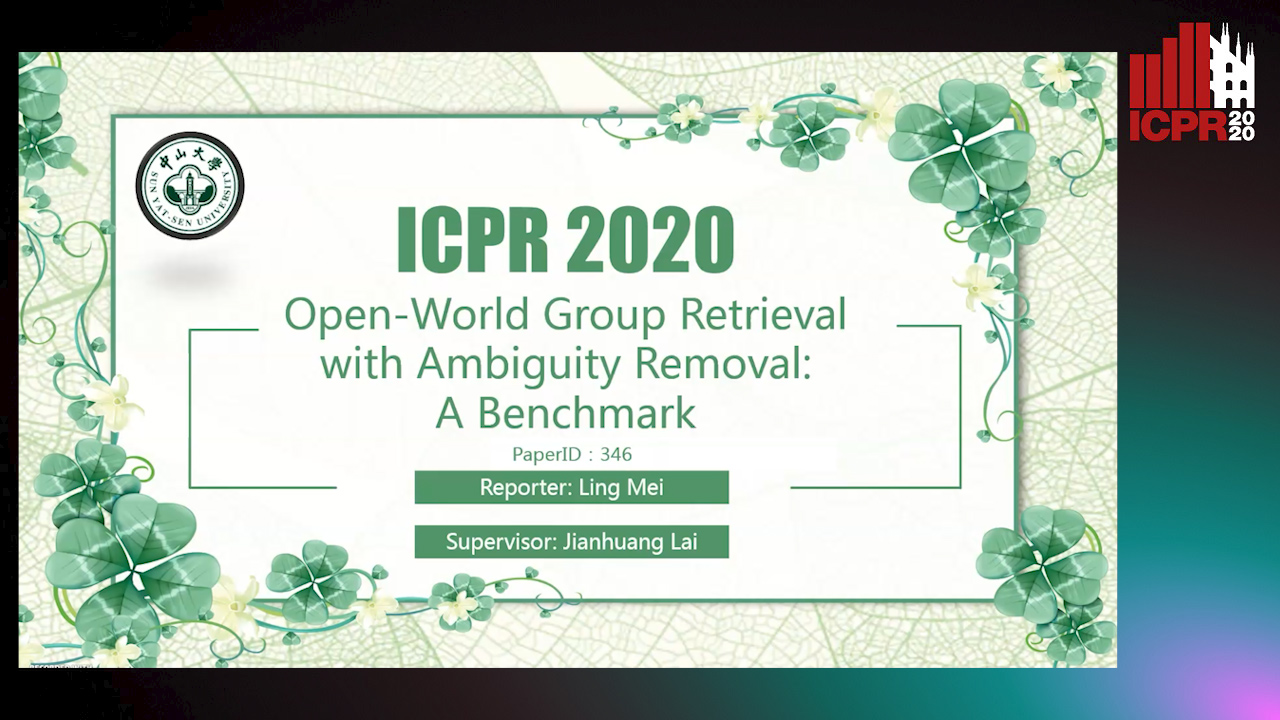
Auto-TLDR; P2GSM-AR: Re-identifying changing groups of people under the open-world and group-ambiguity scenarios
Abstract Slides Poster Similar
Adaptive L2 Regularization in Person Re-Identification
Xingyang Ni, Liang Fang, Heikki Juhani Huttunen

Auto-TLDR; AdaptiveReID: Adaptive L2 Regularization for Person Re-identification
Abstract Slides Poster Similar
Progressive Unsupervised Domain Adaptation for Image-Based Person Re-Identification
Mingliang Yang, Da Huang, Jing Zhao

Auto-TLDR; Progressive Unsupervised Domain Adaptation for Person Re-Identification
Abstract Slides Poster Similar
Not 3D Re-ID: Simple Single Stream 2D Convolution for Robust Video Re-Identification

Auto-TLDR; ResNet50-IBN for Video-based Person Re-Identification using Single Stream 2D Convolution Network
Abstract Slides Poster Similar
Spatial-Aware GAN for Unsupervised Person Re-Identification
Fangneng Zhan, Changgong Zhang

Auto-TLDR; Unsupervised Unsupervised Domain Adaptation for Person Re-Identification
Pose Variation Adaptation for Person Re-Identification
Lei Zhang, Na Jiang, Qishuai Diao, Yue Xu, Zhong Zhou, Wei Wu

Auto-TLDR; Pose Transfer Generative Adversarial Network for Person Re-identification
Abstract Slides Poster Similar
Multi-Scale Cascading Network with Compact Feature Learning for RGB-Infrared Person Re-Identification
Can Zhang, Hong Liu, Wei Guo, Mang Ye

Auto-TLDR; Multi-Scale Part-Aware Cascading for RGB-Infrared Person Re-identification
Abstract Slides Poster Similar
How Important Are Faces for Person Re-Identification?
Julia Dietlmeier, Joseph Antony, Kevin Mcguinness, Noel E O'Connor

Auto-TLDR; Anonymization of Person Re-identification Datasets with Face Detection and Blurring
Abstract Slides Poster Similar
Sample-Dependent Distance for 1 : N Identification Via Discriminative Feature Selection
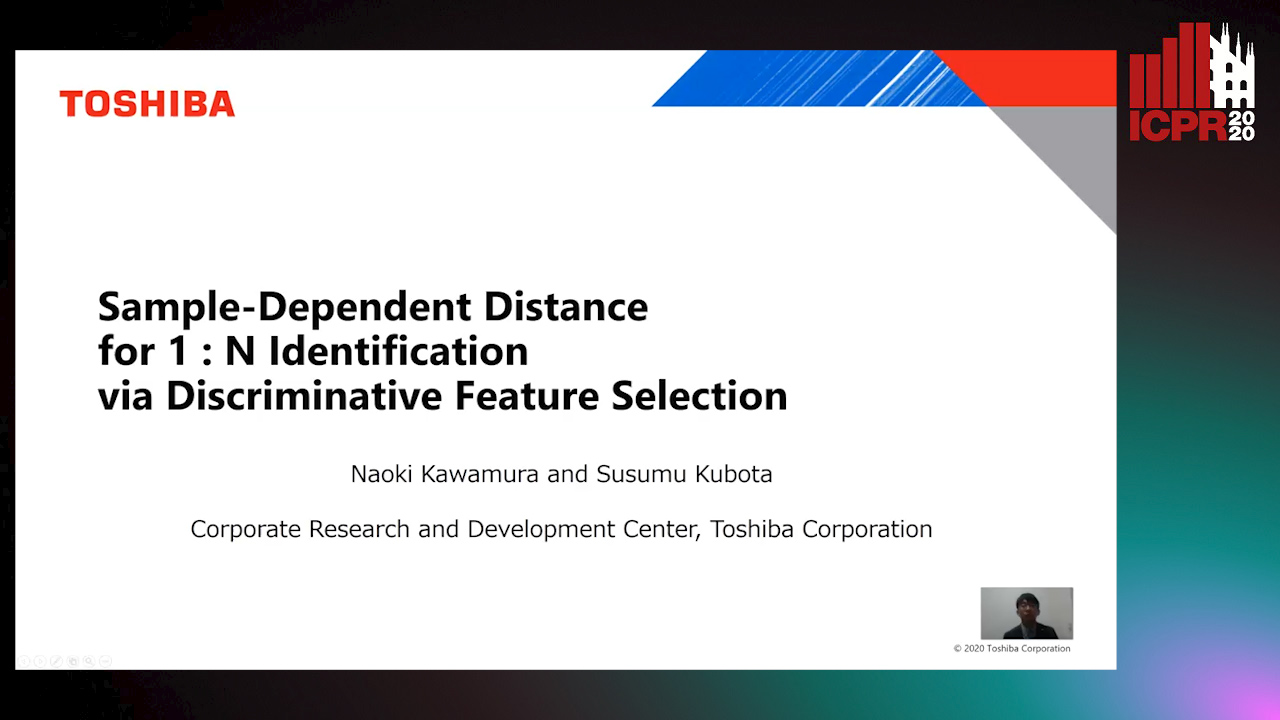
Auto-TLDR; Feature Selection Mask for 1:N Identification Problems with Binary Features
Abstract Slides Poster Similar
Multi-Level Deep Learning Vehicle Re-Identification Using Ranked-Based Loss Functions
Eleni Kamenou, Jesus Martinez-Del-Rincon, Paul Miller, Patricia Devlin - Hill
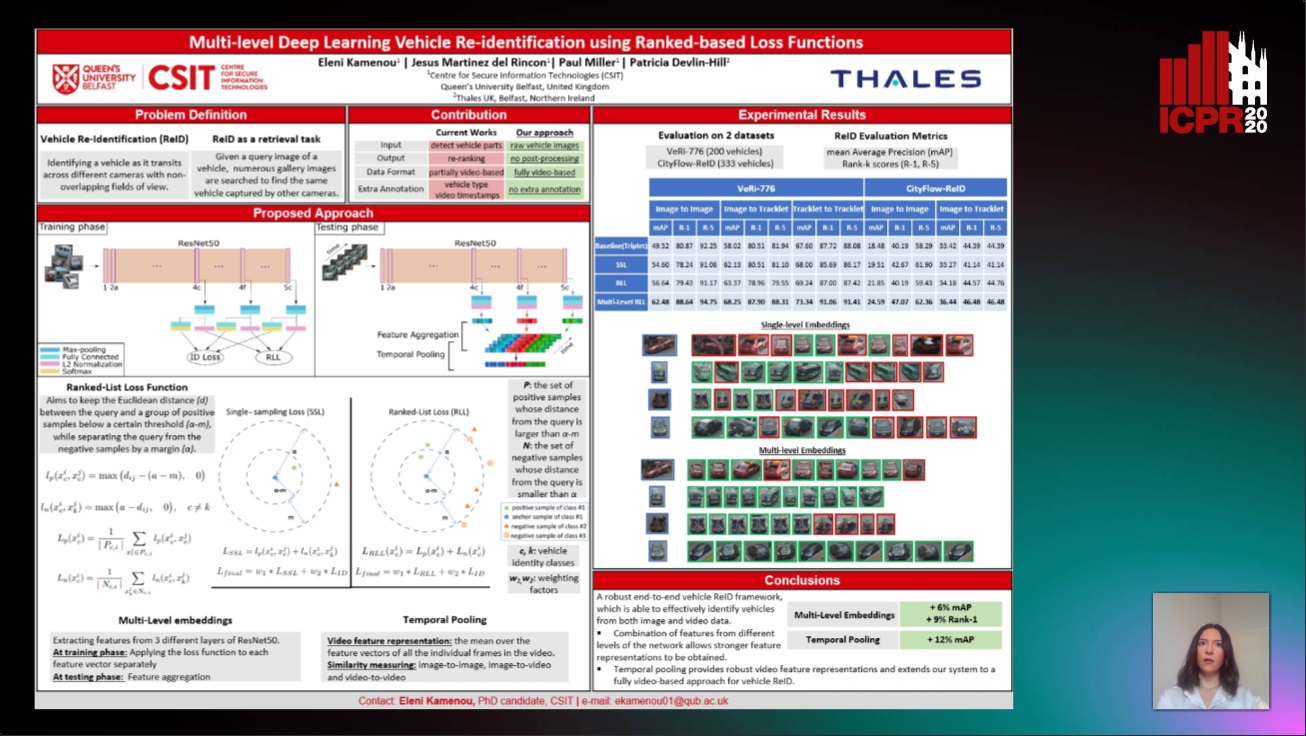
Auto-TLDR; Multi-Level Re-identification Network for Vehicle Re-Identification
Abstract Slides Poster Similar
Rethinking ReID:Multi-Feature Fusion Person Re-Identification Based on Orientation Constraints
Mingjing Ai, Guozhi Shan, Bo Liu, Tianyang Liu

Auto-TLDR; Person Re-identification with Orientation Constrained Network
Abstract Slides Poster Similar
Top-DB-Net: Top DropBlock for Activation Enhancement in Person Re-Identification

Auto-TLDR; Top-DB-Net for Person Re-Identification using Top DropBlock
Abstract Slides Poster Similar
RGB-Infrared Person Re-Identification Via Image Modality Conversion
Huangpeng Dai, Qing Xie, Yanchun Ma, Yongjian Liu, Shengwu Xiong

Auto-TLDR; CE2L: A Novel Network for Cross-Modality Re-identification with Feature Alignment
Abstract Slides Poster Similar
Semi-Supervised Person Re-Identification by Attribute Similarity Guidance
Peixian Hong, Ancong Wu, Wei-Shi Zheng
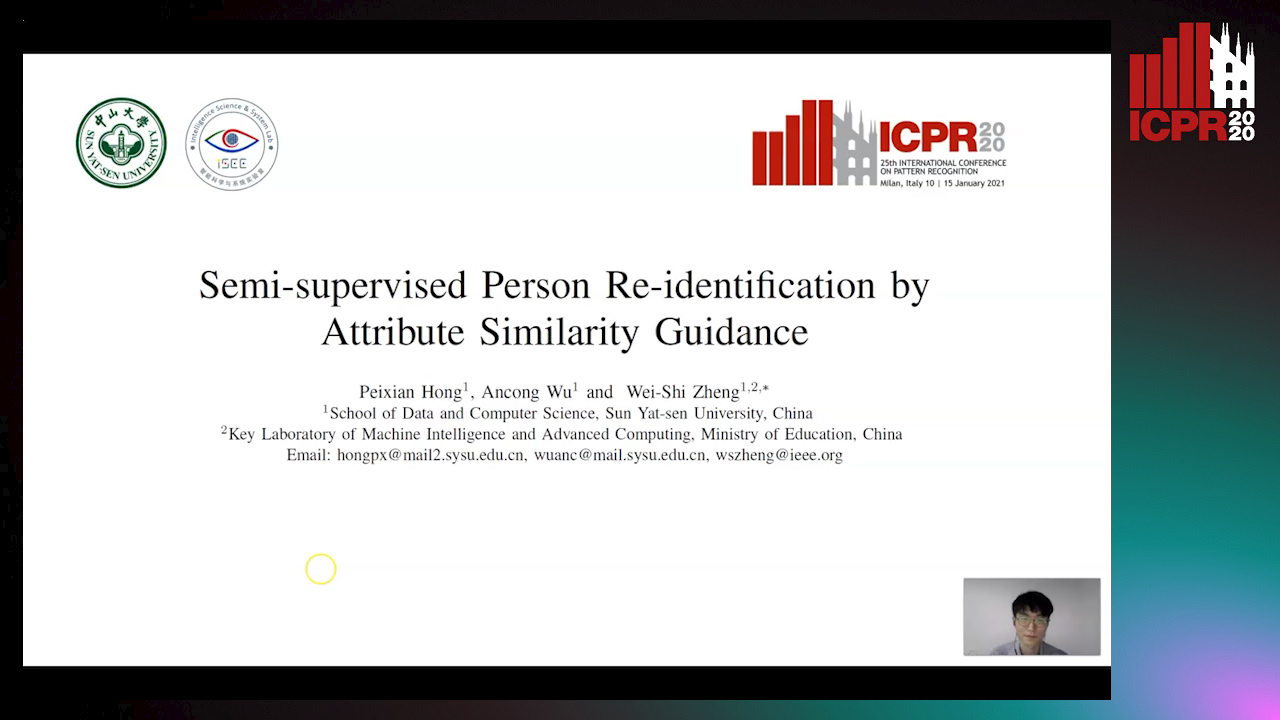
Auto-TLDR; Attribute Similarity Guidance Guidance Loss for Semi-supervised Person Re-identification
Abstract Slides Poster Similar
Polynomial Universal Adversarial Perturbations for Person Re-Identification
Wenjie Ding, Xing Wei, Rongrong Ji, Xiaopeng Hong, Yihong Gong
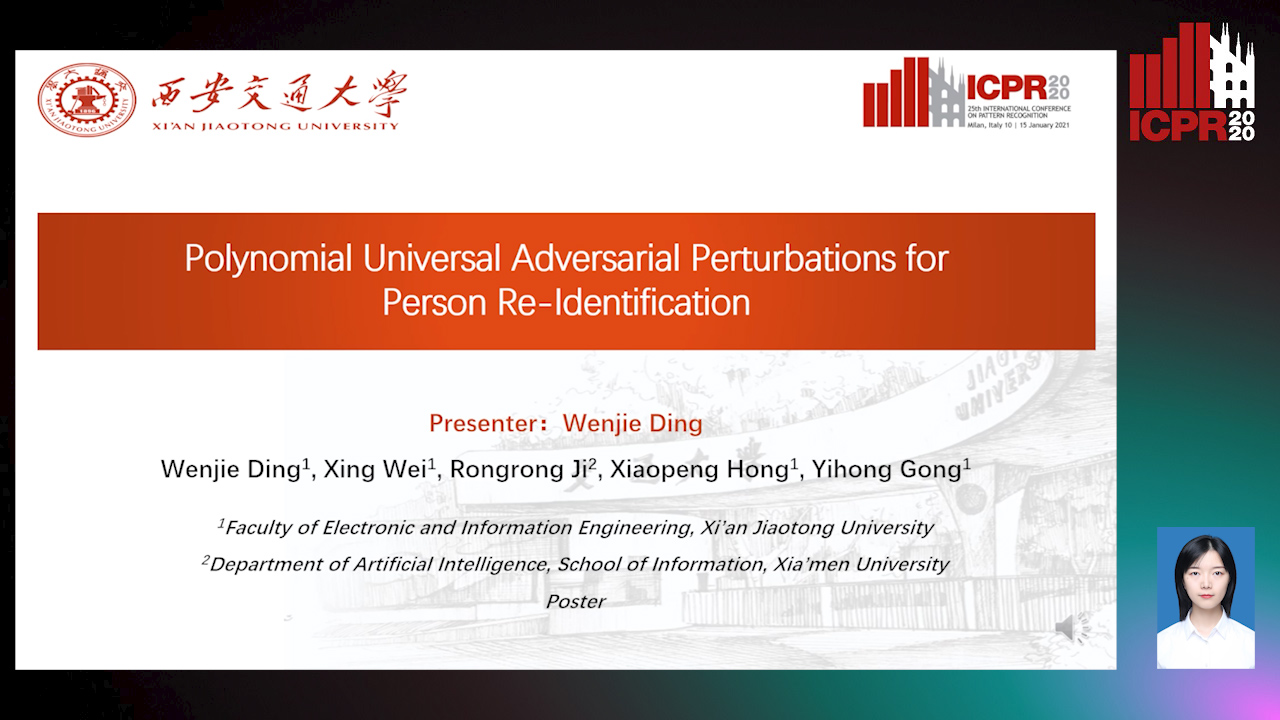
Auto-TLDR; Polynomial Universal Adversarial Perturbation for Re-identification Methods
Abstract Slides Poster Similar
Deep Top-Rank Counter Metric for Person Re-Identification
Chen Chen, Hao Dou, Xiyuan Hu, Silong Peng

Auto-TLDR; Deep Top-Rank Counter Metric for Person Re-identification
Abstract Slides Poster Similar
Unsupervised Domain Adaptation for Person Re-Identification through Source-Guided Pseudo-Labeling
Fabian Dubourvieux, Romaric Audigier, Angélique Loesch, Ainouz-Zemouche Samia, Stéphane Canu

Auto-TLDR; Pseudo-labeling for Unsupervised Domain Adaptation for Person Re-Identification
Abstract Slides Poster Similar
A Duplex Spatiotemporal Filtering Network for Video-Based Person Re-Identification
Chong Zheng, Ping Wei, Nanning Zheng

Auto-TLDR; Duplex Spatiotemporal Filtering Network for Person Re-identification in Videos
Abstract Slides Poster Similar
Recurrent Deep Attention Network for Person Re-Identification
Changhao Wang, Jun Zhou, Xianfei Duan, Guanwen Zhang, Wei Zhou

Auto-TLDR; Recurrent Deep Attention Network for Person Re-identification
Abstract Slides Poster Similar
Generalized Local Attention Pooling for Deep Metric Learning
Carlos Roig Mari, David Varas, Issey Masuda, Juan Carlos Riveiro, Elisenda Bou-Balust

Auto-TLDR; Generalized Local Attention Pooling for Deep Metric Learning
Abstract Slides Poster Similar
Loop-closure detection by LiDAR scan re-identification
Jukka Peltomäki, Xingyang Ni, Jussi Puura, Joni-Kristian Kamarainen, Heikki Juhani Huttunen
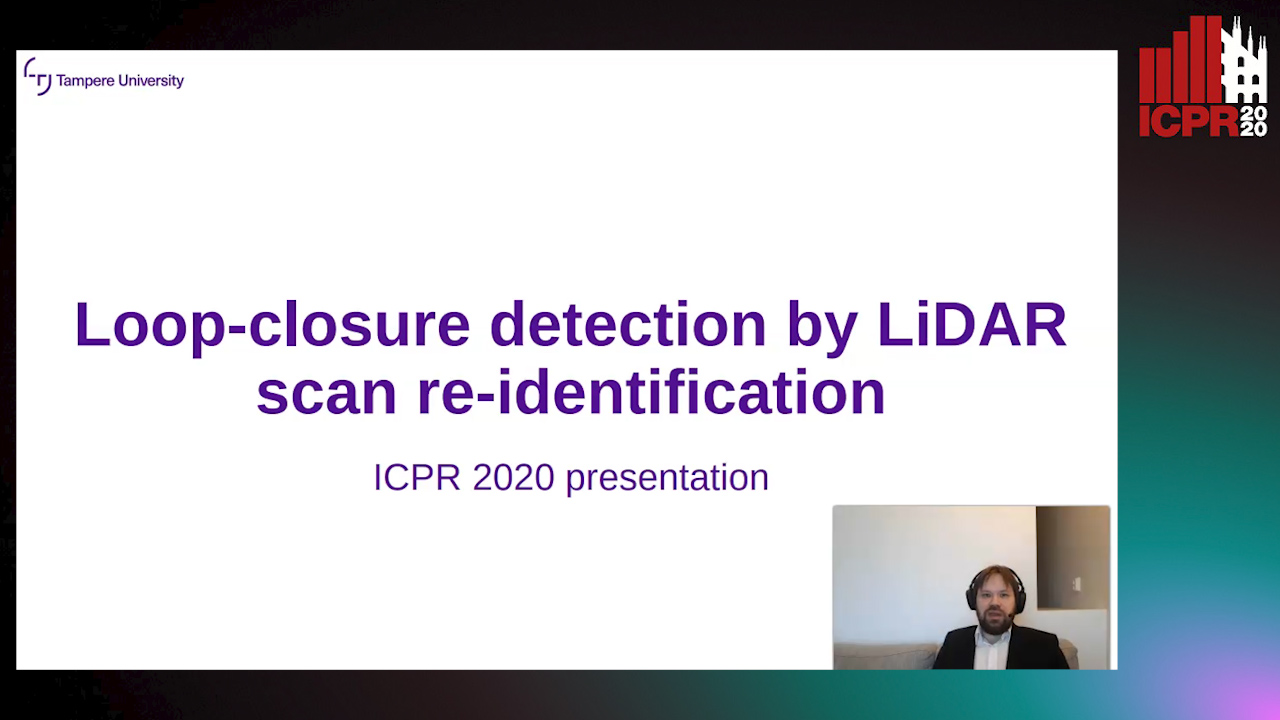
Auto-TLDR; Loop-Closing Detection from LiDAR Scans Using Convolutional Neural Networks
Abstract Slides Poster Similar
Augmented Bi-Path Network for Few-Shot Learning
Baoming Yan, Chen Zhou, Bo Zhao, Kan Guo, Yang Jiang, Xiaobo Li, Zhang Ming, Yizhou Wang
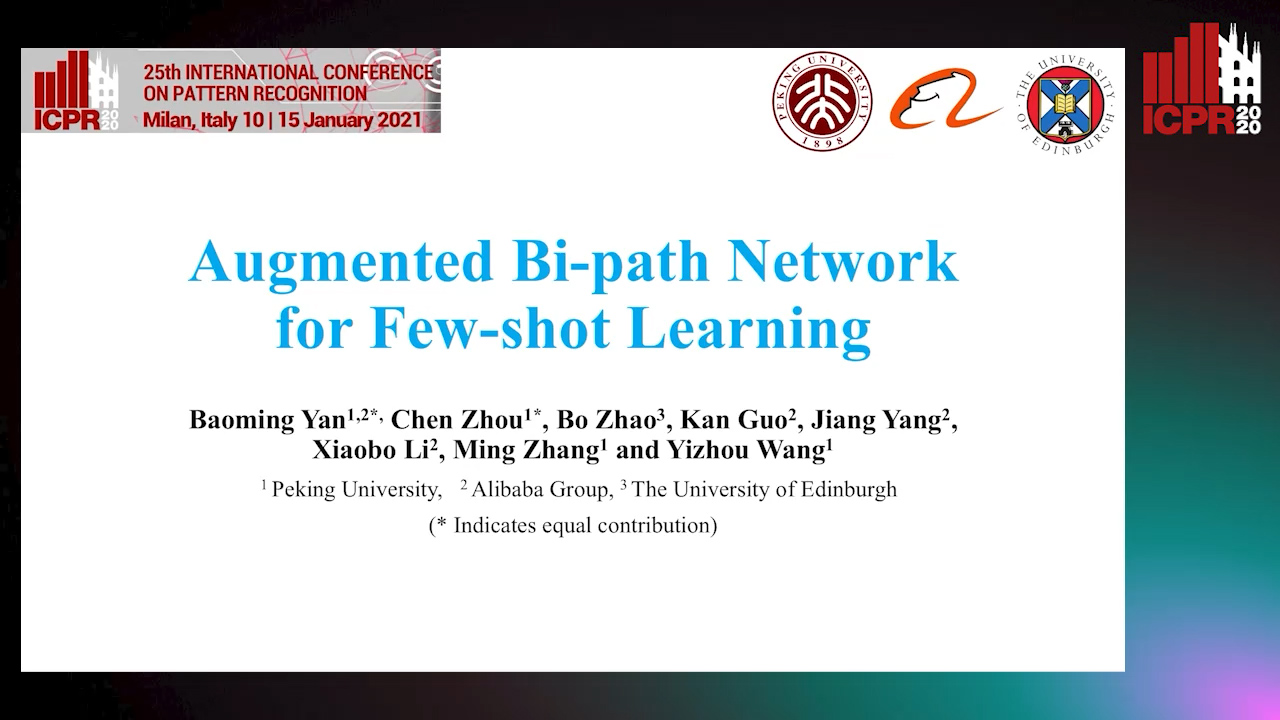
Auto-TLDR; Augmented Bi-path Network for Few-shot Learning
Abstract Slides Poster Similar
Multi-Label Contrastive Focal Loss for Pedestrian Attribute Recognition
Xiaoqiang Zheng, Zhenxia Yu, Lin Chen, Fan Zhu, Shilong Wang

Auto-TLDR; Multi-label Contrastive Focal Loss for Pedestrian Attribute Recognition
Abstract Slides Poster Similar
Supervised Domain Adaptation Using Graph Embedding
Lukas Hedegaard, Omar Ali Sheikh-Omar, Alexandros Iosifidis

Auto-TLDR; Domain Adaptation from the Perspective of Multi-view Graph Embedding and Dimensionality Reduction
Abstract Slides Poster Similar
Decoupled Self-Attention Module for Person Re-Identification
Chao Zhao, Zhenyu Zhang, Jian Yang, Yan Yan
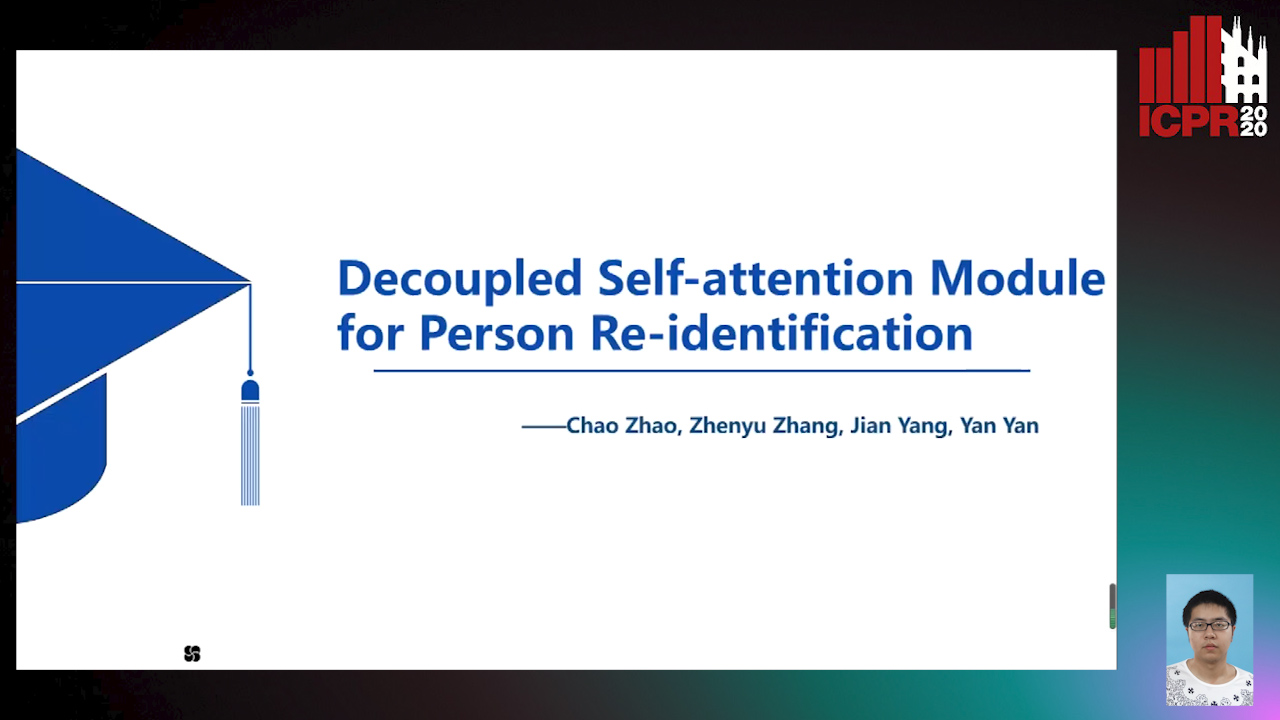
Auto-TLDR; Decoupled Self-attention Module for Person Re-identification
Abstract Slides Poster Similar
A Base-Derivative Framework for Cross-Modality RGB-Infrared Person Re-Identification
Hong Liu, Ziling Miao, Bing Yang, Runwei Ding

Auto-TLDR; Cross-modality RGB-Infrared Person Re-identification with Auxiliary Modalities
Abstract Slides Poster Similar
Attention Pyramid Module for Scene Recognition
Zhinan Qiao, Xiaohui Yuan, Chengyuan Zhuang, Abolfazl Meyarian

Auto-TLDR; Attention Pyramid Module for Multi-Scale Scene Recognition
Abstract Slides Poster Similar
G-FAN: Graph-Based Feature Aggregation Network for Video Face Recognition
He Zhao, Yongjie Shi, Xin Tong, Jingsi Wen, Xianghua Ying, Jinshi Hongbin Zha
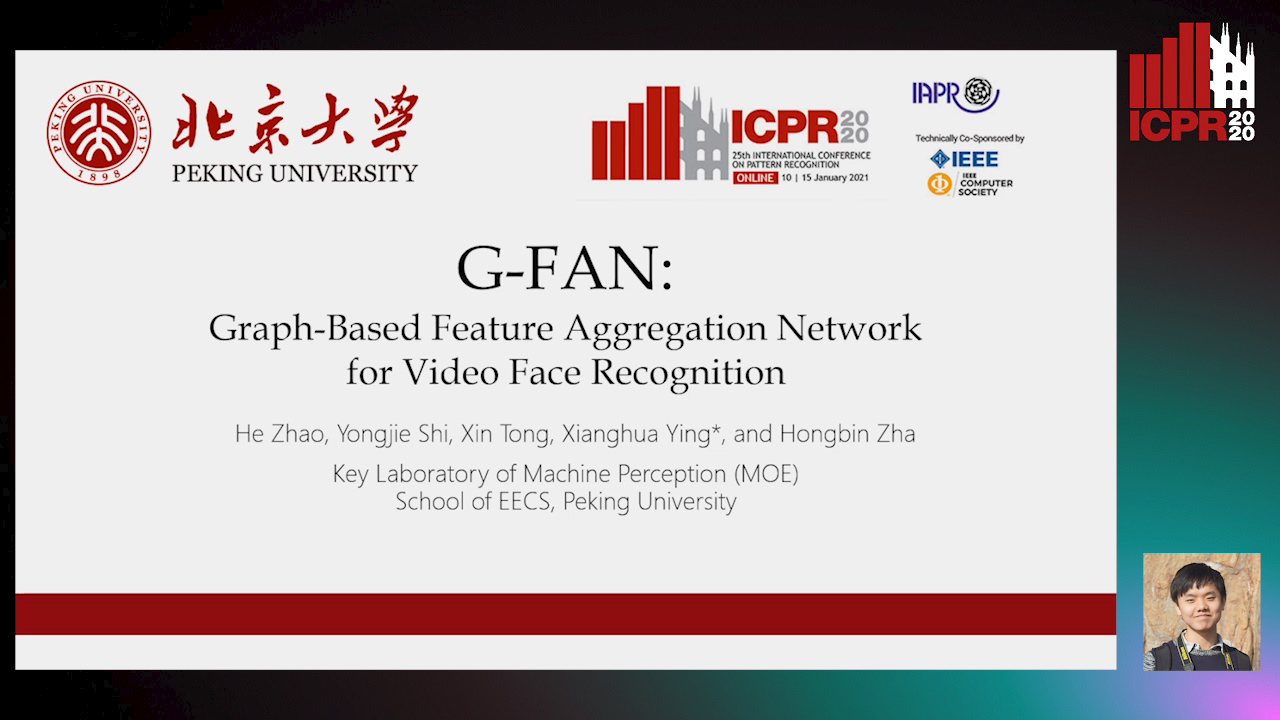
Auto-TLDR; Graph-based Feature Aggregation Network for Video Face Recognition
Abstract Slides Poster Similar
Aggregating Object Features Based on Attention Weights for Fine-Grained Image Retrieval
Hongli Lin, Yongqi Song, Zixuan Zeng, Weisheng Wang

Auto-TLDR; DSAW: Unsupervised Dual-selection for Fine-Grained Image Retrieval
Lightweight Low-Resolution Face Recognition for Surveillance Applications
Yoanna Martínez-Díaz, Heydi Mendez-Vazquez, Luis S. Luevano, Leonardo Chang, Miguel Gonzalez-Mendoza

Auto-TLDR; Efficiency of Lightweight Deep Face Networks on Low-Resolution Surveillance Imagery
Abstract Slides Poster Similar
Bridging the Gap between Natural and Medical Images through Deep Colorization
Lia Morra, Luca Piano, Fabrizio Lamberti, Tatiana Tommasi
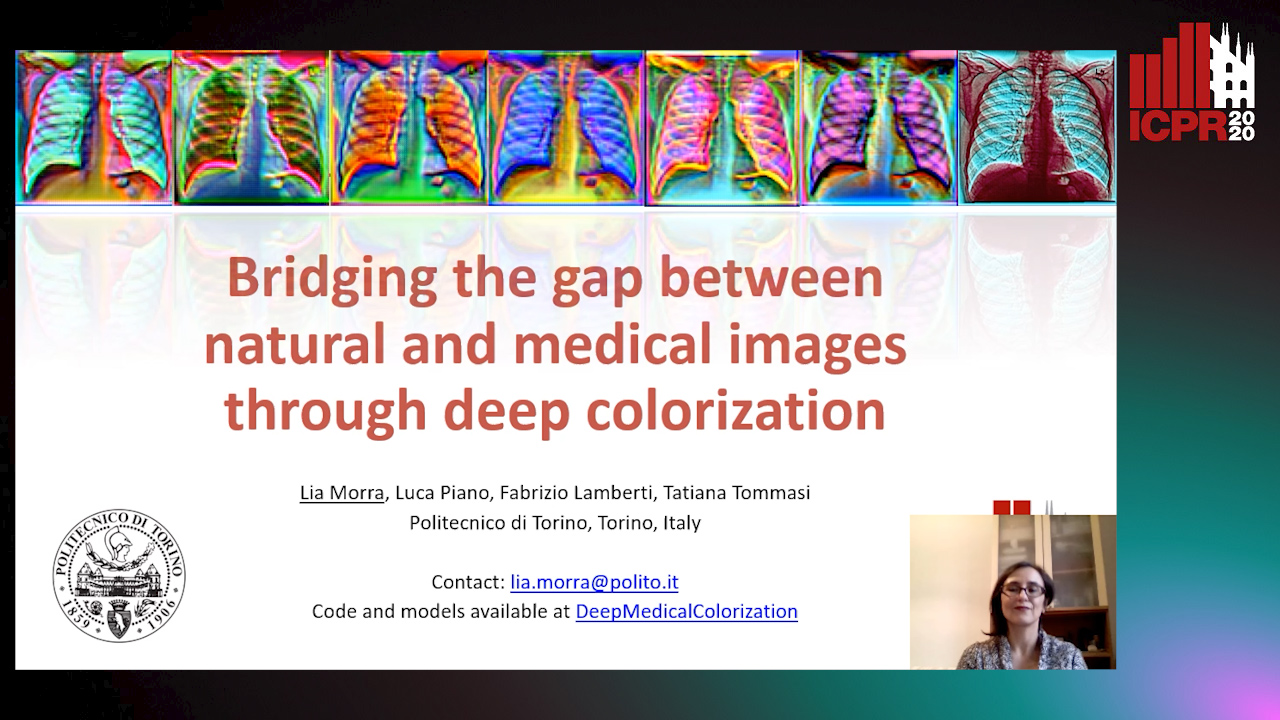
Auto-TLDR; Transfer Learning for Diagnosis on X-ray Images Using Color Adaptation
Abstract Slides Poster Similar
DAIL: Dataset-Aware and Invariant Learning for Face Recognition
Gaoang Wang, Chen Lin, Tianqiang Liu, Mingwei He, Jiebo Luo

Auto-TLDR; DAIL: Dataset-Aware and Invariant Learning for Face Recognition
Abstract Slides Poster Similar
SSDL: Self-Supervised Domain Learning for Improved Face Recognition
Samadhi Poornima Kumarasinghe Wickrama Arachchilage, Ebroul Izquierdo

Auto-TLDR; Self-supervised Domain Learning for Face Recognition in unconstrained environments
Abstract Slides Poster Similar
Gait Recognition Using Multi-Scale Partial Representation Transformation with Capsules
Alireza Sepas-Moghaddam, Saeed Ghorbani, Nikolaus F. Troje, Ali Etemad
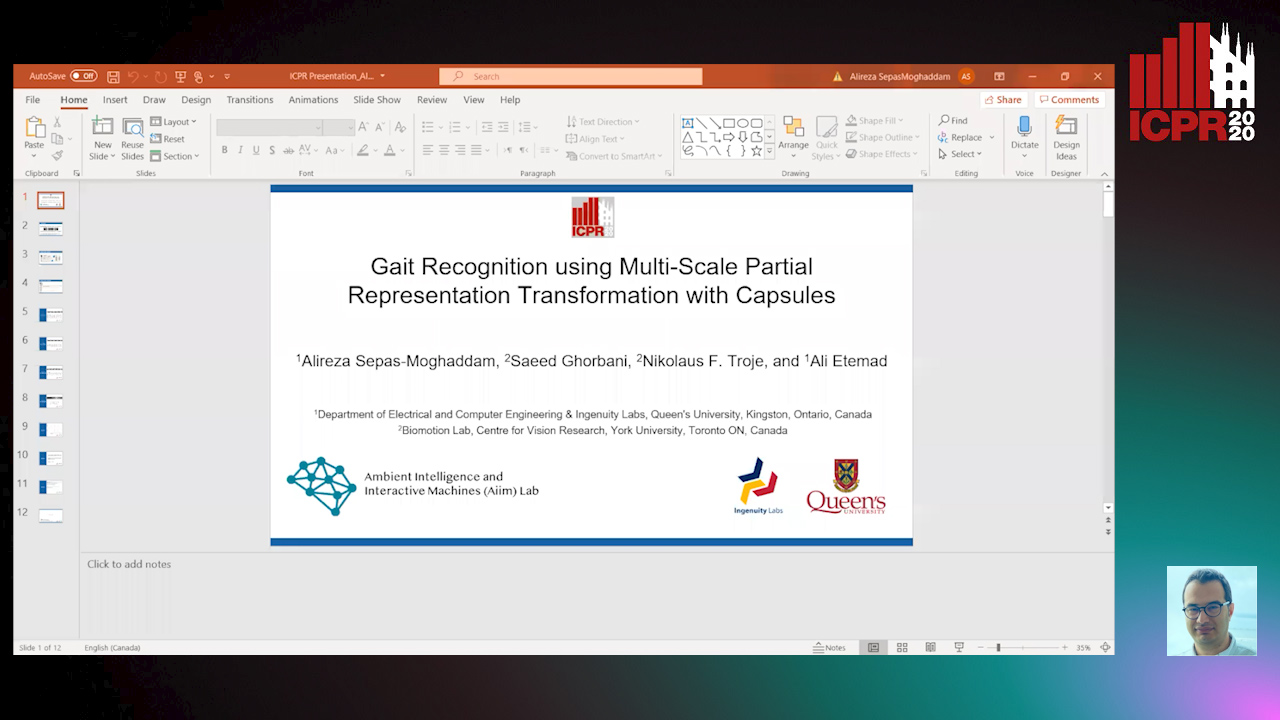
Auto-TLDR; Learning to Transfer Multi-scale Partial Gait Representations using Capsule Networks for Gait Recognition
Abstract Slides Poster Similar
TAAN: Task-Aware Attention Network for Few-Shot Classification

Auto-TLDR; TAAN: Task-Aware Attention Network for Few-Shot Classification
Abstract Slides Poster Similar
Single View Learning in Action Recognition
Gaurvi Goyal, Nicoletta Noceti, Francesca Odone

Auto-TLDR; Cross-View Action Recognition Using Domain Adaptation for Knowledge Transfer
Abstract Slides Poster Similar
Convolutional STN for Weakly Supervised Object Localization
Akhil Meethal, Marco Pedersoli, Soufiane Belharbi, Eric Granger

Auto-TLDR; Spatial Localization for Weakly Supervised Object Localization
A Close Look at Deep Learning with Small Data

Auto-TLDR; Low-Complex Neural Networks for Small Data Conditions
Abstract Slides Poster Similar
Few-Shot Few-Shot Learning and the Role of Spatial Attention
Yann Lifchitz, Yannis Avrithis, Sylvaine Picard

Auto-TLDR; Few-shot Learning with Pre-trained Classifier on Large-Scale Datasets
Abstract Slides Poster Similar